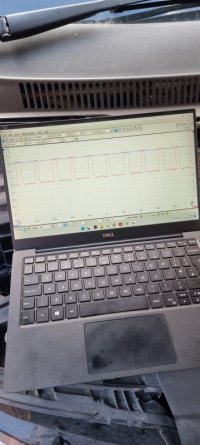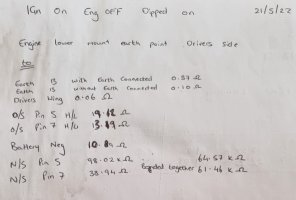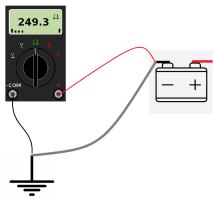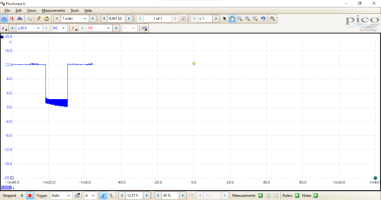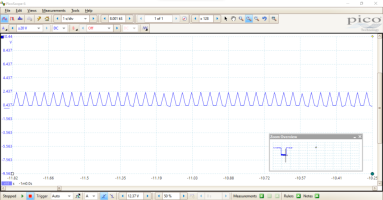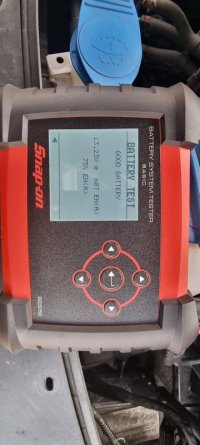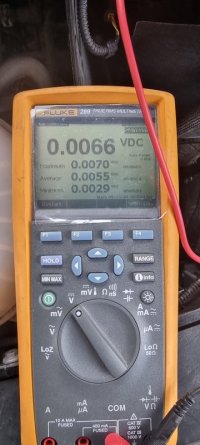Multimeters measure resistance by injecting a small current into the circuit, and then measuring the voltage drop across those points in the circuit, having the circuit powered on will cause interference with the resistance measurement and will cause bad readings. Even the quiescent current of the van (approx. 30 mA) is much larger than what the multimeter is capable of injcecting.
One way to check the existence of disturbing currents is to swap the multimeter leads (common and +) - and verify readings. In presence of external factors the reading will change dramatically - even negative resistance could be observed.
Anyways, that's just to explain the different resistance values observed with/without ignition on - not to get distracted with strange results.
Have you tried warming up the headlight (power module) with heat gun - just to see if that would have any effect on blinking/flashing "rate"? Perhaps combined letting starter battery discharge down to 12 Volts (having lights and ignition on), and the same keeping battery at 14.8 Volts by charger?

